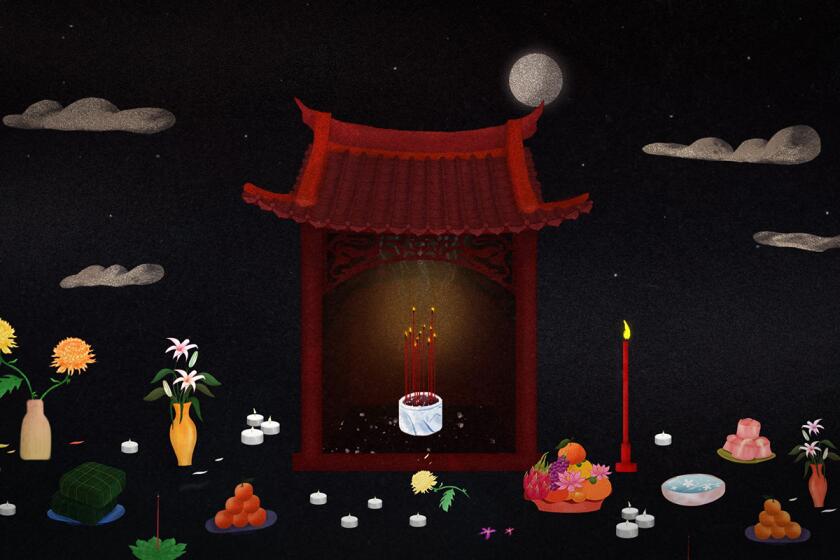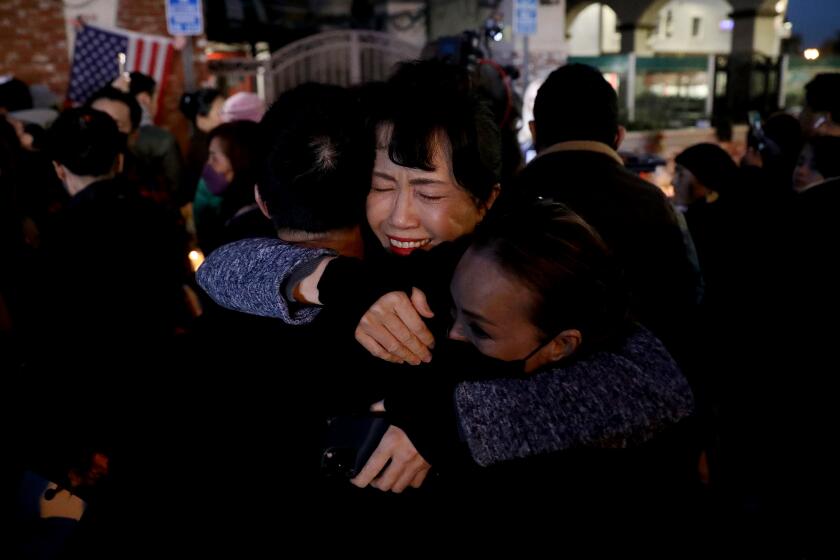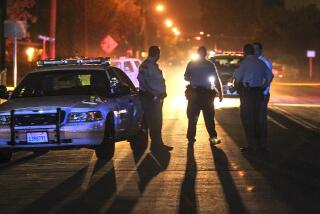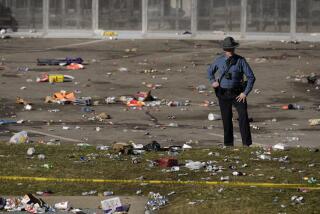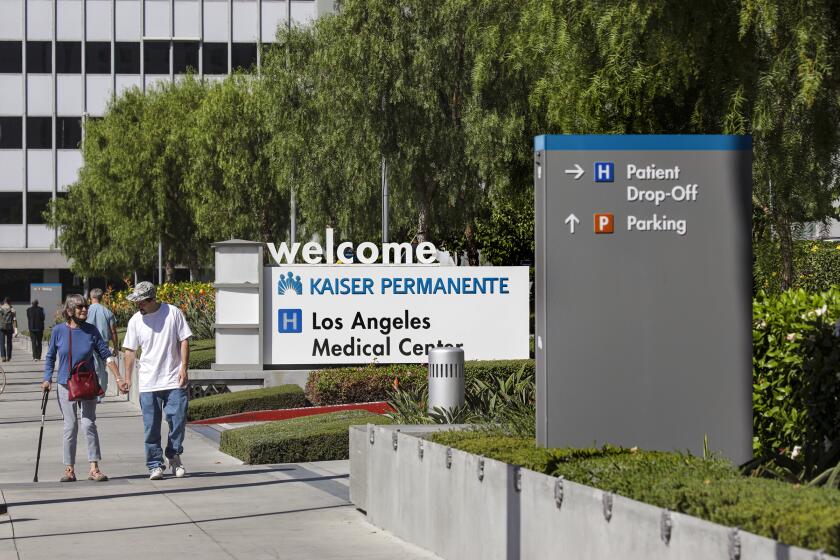Our psychological armor helps us cope with mass shootings, but numbs us to the destruction
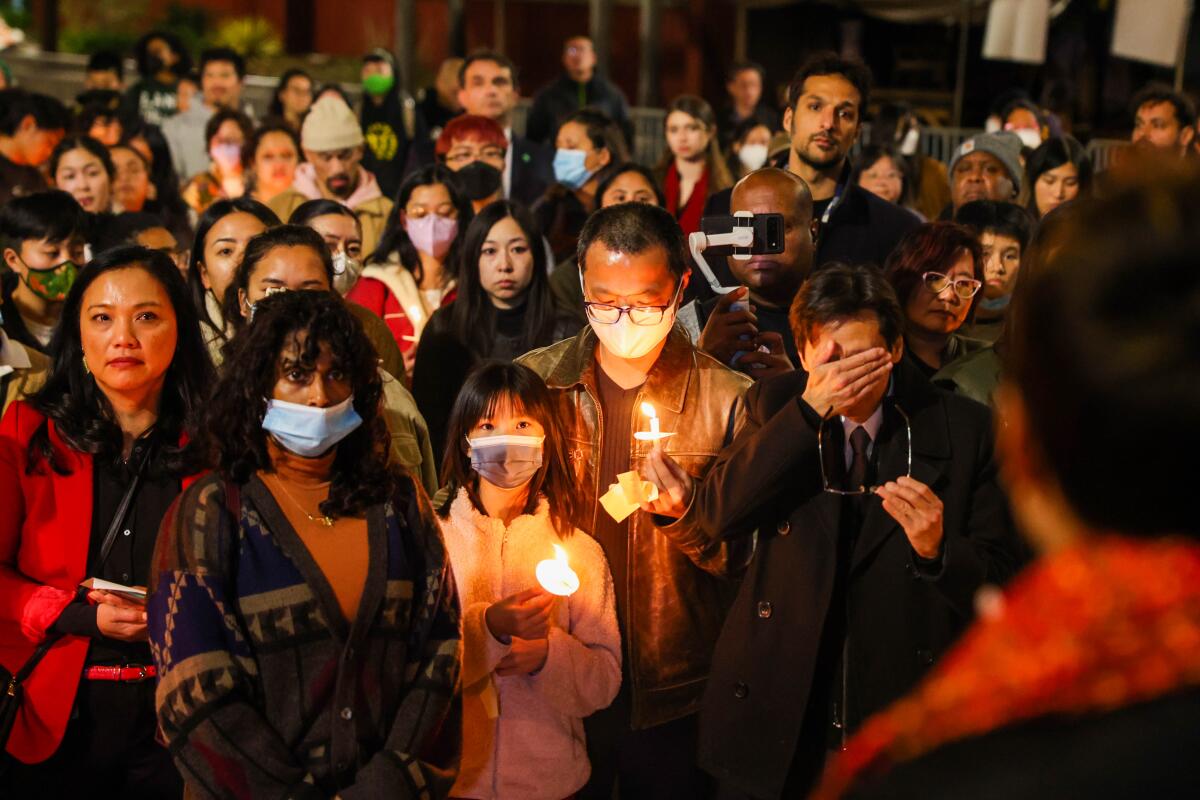
The news of the mass shooting in Monterey Park broke early last Sunday morning and crashed into the expectations of a new day. Details were slow to develop — a gunman still at large — but soon enough the scope of the tragedy was laid bare.
Ten people were killed and at least 10 others were injured when a gunman opened fire at a ballroom dance studio….
The shooting occurred off a main thoroughfare of Monterey Park, Calif., that earlier in the day had hosted a festival celebrating the eve of the Lunar New Year, a major holiday in many Asian communities ….
A familiar dirge had begun, voices rising up, struggling to find the words to match this horrendous act.
But nothing succeeds, just silence. We’ve been here too often — at Sandy Hook, Orlando, Parkland, Buffalo, Colorado Springs — standing upon this terrible topography.
And now it had landed us in a familiar suburb — among Los Angeles’ many familiar suburbs — where the story felt more intimate, more knowable. The victims were our neighbors.
By Monday, the tally was complete: 11 victims, six women, five men. Soon there followed the wrenching and necessary theater of news conferences and vigils and calls to action. By now, it is almost formulaic.
We have been here before, and we will be here again. Saturday’s shooting in Benedict Canyon, killing three and wounding four, confirms it, and a week before Monterey Park, six people were killed in the Central Valley town of Goshen. Less than three days after Monterey Park, a gunman opened fire in Half Moon Bay, killing seven. And the urgency of these losses loosens its grip, almost dissipated by the numbers, the heartache and confusion.
On Jan. 21, the Monterey Park community was shattered when the Star Ballroom Dance Studio became the site of one of California’s worst mass shootings in recent history. Many of the victims were studio regulars united in their passion for dance. Here are their stories.
The dead are dead on a scale and by such violence that defies assumptions of what life, especially life in America, is supposed to be, and the particulars — casualties, shooter profile, community impact — hardly matter. They differ only by degrees.
Gun violence has become the drumbeat of our days. We say we’re shocked, but we’re really not. We say we’re in disbelief, yet we’re really not.
“A numbing is happening,” said Dr. Paul Nestadt, a professor of psychiatry at Johns Hopkins University in Baltimore. “The normalization of tragedy is human nature. It’s called adaptive psychology: If we allowed these deaths to live in our head, we wouldn’t be able to live ourselves.”
Nestadt is borrowing from the work of Robert Jay Lifton, who coined the phrase “psychic numbing” after conducting research in Hiroshima in 1962 and witnessing the narrowed emotions of the 1945 atomic bombing survivors. Where feeling is a liability, psychic numbing is a reality.
Since New Year’s Day, 43 mass shootings from Minnesota to Florida, from Baltimore to San Francisco, have left 78 dead and 176 injured, according to the online dashboard Gun Violence Archive, and the number rises nearly every day.
Not every incident is high-profile; arguably they should be. On the night that Huu Can Tran went on his rampage in Monterey Park, gunfire erupted in a nightclub in Baton Rouge, La., leaving 12 injured. Earlier this month in Miami Gardens, Fla., 19 people were wounded in two incidents four days apart, according to the archive.
The paradox of this bloodshed — making sense of the senseless, comprehending the incomprehensible — leads to an odd calculus. As much as we might try to meet the moral imperative of not looking away — laying wreaths in Monterey Park, for instance — we eventually turn away.
Paul Slovic, professor of psychology at the University of Oregon who studies empathy and mass casualties, has made this point in the aftermath of war, genocide and the pandemic. “Our feelings are not good at quantitative assessment,” Slovic said. “As numbers increase, we become more and more insensitive.”
“I don’t blame people for habituation,” said Dr. Jonathan Metzl, a professor of psychiatry at Vanderbilt University. “This is what happens with repetitive stress and trauma.”
Metzl, who has studied and written extensively about gun violence in America, describes a sense of déjà vu, resignation, hopelessness, anger and frustration even among those so committed to ending these tragedies. Such emotions, he said, inhibit our ability to appreciate the complexity of the problem.
“Part of what happens when you feel frustrated and resigned is that you’re unwilling to engage in nuance and complexity — not just with mass shooting but with American gun violence more broadly,” he said. The impulse is to look for “easy causal answers, but it is never one thing.”
Instead we fashion hand-lettered signs — “ban semi-automatic rifles” — and decry politicians and the gun lobby and find ourselves caught up once again in a long debate that cannot be won.
The progression is predictable. Out of grief comes rage, an easier emotion to carry than sorrow. It drives the rhetoric. It demands an explanation as if an explanation could assuage the pain or prevent future killings.
“The deep irony,” said Scott Slovic, an English professor at the University of Idaho and son of Paul Slovic and part of his father’s research team, “is that we have this psychological armor, these insensitivities that have prevented us to be appropriately sensitive to the destruction around us.”
In the rush to find answers and motivations, cause and effect, we progressively distance ourselves from lives that were lost, lives that parallel our own.
“We’re doomed to the status quo until we develop new habits,” said Scott Slovic, who argues for a broader understanding of compassion. “We can’t say I am who I am and this incident in Half Moon Bay or the suburbs of Los Angeles has nothing to do with me. We have to erase our identity and leap into the circumstances of another.”
In Monterey Park, they were mothers and fathers, wives, sons and brothers who watched children grow, grieved the death of a parent, sought happiness in the company of others and the pleasure of music and dance.
Some had immigrated here, leaving behind memories of war, of loss and hardship, and had found a semblance of peace, happiness, even prosperity far from their home. Through ritual and food and memories, they found their place in America and celebrated their connections with the past in a new world.
In Half Moon Bay, they were a different community, separated perhaps by just a generation from what they dreamed for. They were farmworkers, whose lives were interwoven by their jobs, struggles and the recollections of the countries and family they had left behind.
Working for a new life, they had supported one another with love and the hope of finding a future that could sustain them. By some accounts they succeeded, if the food they shared, the reunions with family, the celebrations and sorrows they weathered are any measure.
While Saturday’s mass shooting still weighs heavily on the community, instructors and students say they are ready to get back to dancing.
But more than words on a page, a Facebook posting or a GoFundMe campaign, their stories are a reminder of how similar we all are and that their death by gunfire could be our death as well. Where mass shootings are concerned, there is no them and us. Little keeps us safe from a workplace grievance, spousal or partner fury, racial vendetta.
“It is not just about a death count,” Metzl said, “but the larger psychology of feeling unsafe in public spaces, which has broad implications for society.”
Our days, like those of the victims, are contingent upon the assurance that they will end as they began. Anything less is a reminder that life is fleeting and precarious, and it can be cruel. Perhaps this is the truth we avoid by following familiar patterns of response that keep us in a psychological and political stalemate.
“I think our society is going to increasingly struggle with responding effectively to these mass catastrophes unless we find it within ourselves to be more compassionate, and such compassion works its way into our public policies,” Scott Slovic said.
We caught a glimpse of this possibility last year when President Biden signed the most sweeping gun violence bill in decades, strengthening background checks for young gun buyers, restricting gun ownership for domestic violence offenders and providing grants for agencies trying to enforce red-flag laws.
“Mass shootings are a reflection of a dysfunctional political system,” Metzl said. “Limiting casualties requires a functioning political system where people can negotiate for reasonable protection.”
Progress will be slow and at times faltering, but the lives lost in Monterey Park, Half Moon Bay and across this ravaged country demand nothing less.
More to Read
Start your day right
Sign up for Essential California for news, features and recommendations from the L.A. Times and beyond in your inbox six days a week.
You may occasionally receive promotional content from the Los Angeles Times.
